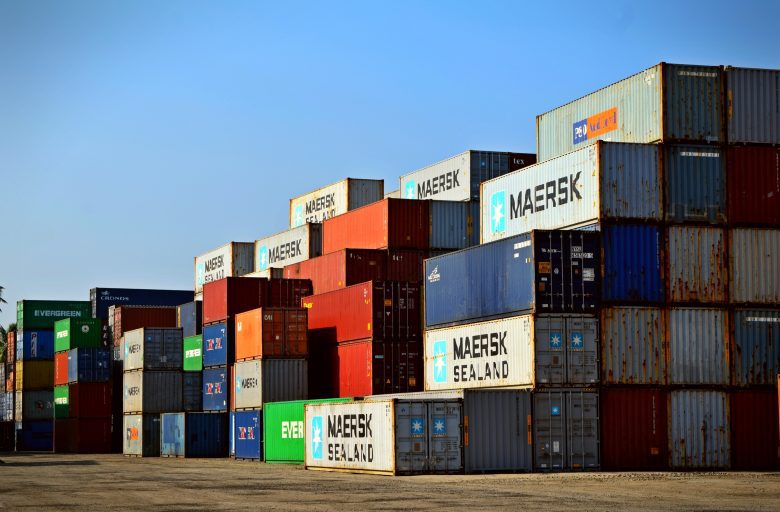Technology is vital for any business. If you want to cope with your competitor, especially in the logistic business, you need to update your business with new technology. It is changing the pattern of how the world does business. Everything is online and accessible at our fingertips. Big companies like Amazon set the pioneer of fast-paced delivery service with less than an hour after ordering.
Amazon continuously updated its business with the latest technology, and as the world knows they have a robust logistics system. Adoption of new technology can improve productivity in the supply chain, decreasing costs and other errors.

Tracking, visibility or processing, and other all technology aspects play a big role in logistics service. In this era, logistics operations management is going to make the global supply chains more specific, and sustainable. Technology in logistics processes carries out remarkable improvements in productivity and efficiency in the workflow.
Here are the top 5 logistics industry trends in 2021 that you should know:
1. Green Logistics
2. Supply Chain Resilience
3. Shipment of Refrigerated Goods
4. Omnichannel Services
5. Technology and 5G
Top 5 logistics industry trends in 2021
1. Green Logistics
Green logistics are also known as Eco-logistics. The logistics industry tries to implement this measure and sustainable policy to minimize the environmental impact on transportation, warehousing, and other logistic activities. The aim of this policy is to give a sustainable value that balances economic and environmental efficiency. A company can gain profit while implementing an eco-friendly strategy and helping the environment. Companies can use green logistics which is better for brand representation and have fewer expenses.
A green and environmentally friendly atmosphere can help companies to improve efficiency and possibly lower costs. The circular supply chain is replacing the linear supply chain and if any company adopts the circular supply chain, then they can reduce costs in the long term, reduce waste, and reduce the impact on the environment. The vital decision in accepting this approach is stricter regulations during recycling and waste disposal.
Green logistics policies give additional benefits over the competition. Green logistics prepares a company for the future and also increases brand among the customer. Green logistics is the future, we can’t deny it and delay it. A company needs to understand that green logistics is not an option, it is a need in the market, especially in the 21st century. It enhances energy savings and is an effective plan for coping with rising supply costs. A company needs to prepare to comply with environmental regulations.
2. Supply Chain Resilience
Supply chain resilience has grabbed the attention of organizations and strategy creators in recent years. Many investigations and analyses have shown up in recent times that underline the significance of this point in a globalized world. But what about the execution of supply chain resilience? Do organizations have the ability to address resilience? One thing that the COVID-19 pandemic in 2020 prodded was Supply Chain Resilience.
Questions were raised on how deft and adaptable the worth chains were, both from a stockpile angle yet in addition from a self-rule and public safety outlook. Organizations with resilient supply chains can handle change in their supply chain & operations. They can accept quickly evolving patterns of supply and demand. They analyze pro-level data to predict disruption and react with strategy, at pace. With these risks and management abilities, their supply chains are more safe, transparent, and also transparent to change the needs and values of customers.
When we talk about supply chain resilience then buffer capacity is the most effective method to improve resilience. The main challenge is that buffers are costly. Many companies want to decrease geographic dependence in their global networks. Local supply chains may be more costly because they involve more players and the complexity of the ecosystem, but they adapt more control over inventory and transportation of the product near to the end consumer.
3. Shipment of Refrigerated Goods
Shipment of Refrigerated Goods is a transportation way of moving temperature-controlled goods. In a shipment of refrigerated goods, freight is loaded and moved in trailers made in refrigeration systems and climate control. Shipment of refrigerated plays a vital part in the global economy since it’s the only method to stop product deterioration in transit. Shipment of refrigerated goods gives many benefits.
Some products are always in high demand such as dairy, fruits, and vegetables. Refrigerated goods need special protection from rain and sun. Strict compliance uses for reefer carriers, are the best and safest method to transport temperature-sensitive goods. Aside from food and drink, refrigerated shipping serves a wide range of ventures. Reefers are frequently utilized for moving blossoms, plants, makeup, and compelling artwork. This makes refrigerated a profoundly pursued delivery choice and a quickly developing area of the transportation business.
Advanced innovation lets reefer trailers change in accordance with the necessary temperature. You can likewise screen shipment temperature, stickiness, and different variables continuously. According to research, refrigerated shipping is taking fast growth this year and beyond it. The pandemic is the main reason behind it. The worldwide circulation of the COVID-19 vaccine, yet additionally other medication requests will require coordination arranging more than ever because of the temperature prerequisites.
Delivery organizations should grow their armadas of trucks and transportation holders just as environment-controlled distribution centers. For that, they need to apply cutting-edge innovation like its applications, Machine learning, and Predictive analytics.
4. Omnichannel Services
Now, consumers like flexibility in their orders. A company that offers omnichannel options to their consumer, improve customer experience. Consumers like options, whether they shop online or in the physical store. The omnichannel approach offers a customized insight for clients as promoting, deals, and coordination join endeavors. Coordinations and supply chains are liable for the reliable satisfaction of orders that come from any of the channels.
No-contact conveyance is the new ordinary, offering different drop-off conveyance choices, borne from clients’ wants to limit actual contact. A huge improvement is moving to drive automated conveyances into its next stage utilizing advanced mechanics and computerized reasoning-based applications. At first, improvement has been on the B2C side, yet we are seeing a few of the B2B arising. Client satisfaction is more significant and harder to procure than at any time.
Expanding client maintenance by just 5%, builds a business’ benefits by 25%-65%. However, as numerous as 55% of purchasers effectively find ways to switch marks in any event, when fulfilled by purchases. Also, it is getting harder to contend, based on one or the other, cost or quality; very nearly 66% of buyers would address greater expenses not founded on the guaranteed nature of an item or administration, but since of the straightforwardness of the buying experience.
Further, up to 70% of shoppers would not finish their request with or re-belittle a business they had a helpless client assistance experience with, paying little heed to b2b b2c order fulfillment.
5. Technology and 5G
With the guarantee of relentless information, download and transfer speeds, more extensive inclusion, and more steady associations, 5G, the fifth-age cell innovation, is set to change versatile availability as far as we might be concerned. 5G is required to change supply chains all throughout the planet as it opens up in more business sectors over the course of the following, not many years.
More organizations are moving to a data-driven outlook in their dynamic to foresee future execution and streamline operational efficiencies which will require the assortment and an examination of a huge area of information, some continuously. Exponentially quicker data speeds and decreased inactivity will bring about a more responsive organization to help this change, while additionally preparing for more Internet-empowered brilliant gadgets to be incorporated along with the coordinations store network.
This will deliver coordination measures quicker, more secure, and more solid. With smarter gadgets from temperature-observing sensors to self-governing vehicles, locking onto the limited frequencies of more seasoned cell organizations, versatile organization administrators are running out of usable radio channels1 on momentum ranges. 5G will change the way of shopping and other types of activity. When 4G came, the digital world changed rapidly.
We can only predict the impact of 5G. It will change the way of using the internet because it is the fastest speed ever. The logistics company will get more exposure after 5G will come. 5G is helpful to track the right location of your parcel or other products while in the local area. But the challenge remains due to the widespread nature of the delivery mission.
Bottom Line
In conclusion, we are going towards a transformative, quickly moving, and challenging future. Generally, we are up for a profoundly transformative, quickly moving, and energizing future. It’s impending for supply chain pioneers to cultivate an environment that draws in people with an endless mentality, where learning, and re-learn constantly again is natural. Learning is the only option to stay in competition in the future.
Logistics entrepreneurs need to be prepare their mindset to learn and ready to accept the new challenges of future trends. These trends are very important and should be known to compete with challenges. Green logistics is the biggest factor in today’s technology trends. In the upcoming year, the supply chain and logistics technology industry will grow rapidly and these trends affect this sector directly. 5G is ready to speed up this trend, logistics businesses need to know the upcoming trends and try to implement them in their business as soon as possible.
Infographic created by Chicago Tag & Label, a label manufacturer

























